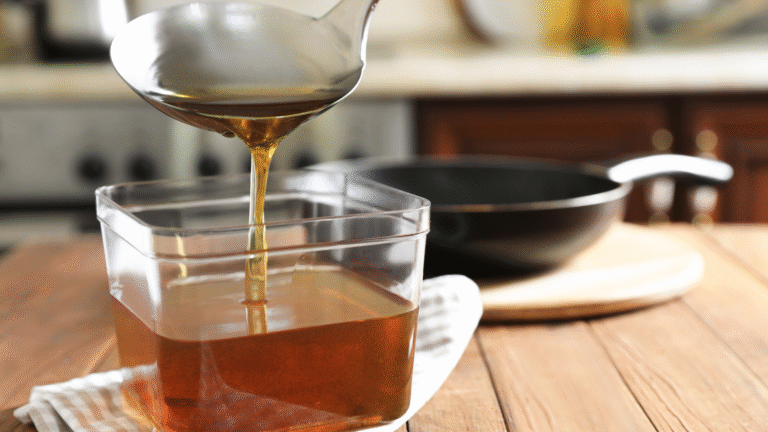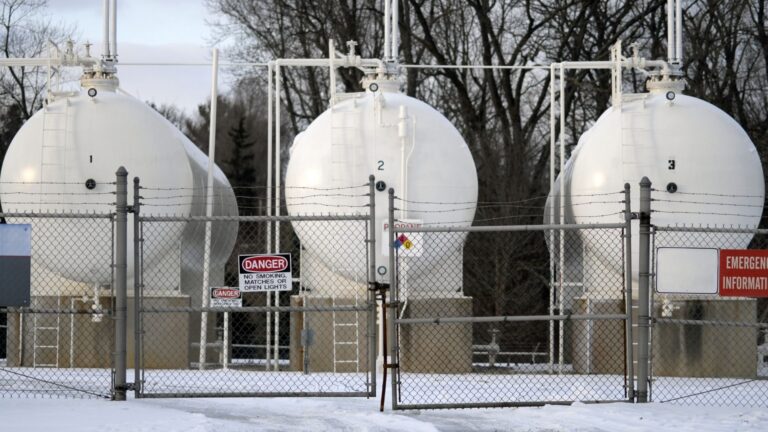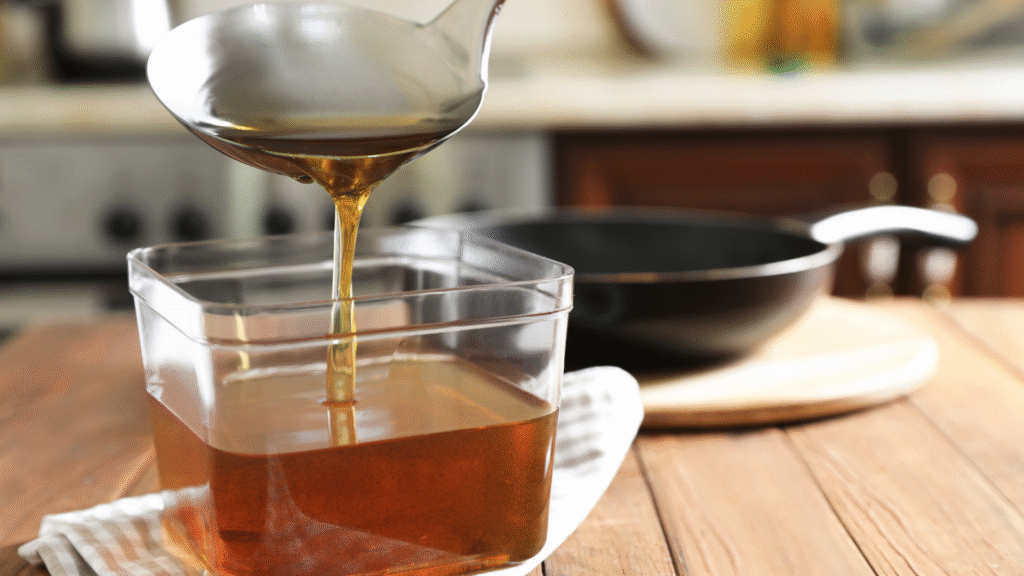
In the US, hotels and restaurants generate more than 3 billion gallons of waste cooking oil every single year.
In this article, CTI safety disposal experts share the best practices for disposing of cooking oil responsibly to protect the environment and avoid legal penalties.
Why Is Proper Cooking Oil Disposal Important?
Pouring cooking oil down the drain causes big problems over time, even if it might seem harmless. When the oil cools, it solidifies inside your pipes and creates blockages.
These blockages lead to plumbing repairs which are costly and even sewage backups that overflow into your kitchen or bathroom.
Besides the repairs, which can be costly, the environment is also affected by this waste. Just one liter of oil can pollute up to a million liters of water, and once it reaches the oceans, the oil floats on top and blocks sunlight and oxygen. This makes it difficult for aquatic life to survive.
Most cities have laws against improper oil disposal, and if you are caught dumping oil down drains or outdoors, you could face fines that may even reach thousands of dollars.
Methods for How to Dispose of Cooking Oil at Home
- Let It Cool and Solidify
The first step when you want to know how to dispose of cooking oil is to let it cool completely. Hot oil can cause burns and melts through containers.
Once cooled, small amounts of oil will solidify naturally. You can then scrape it into your trash. For oils that stay liquid, move to the next method.
- Container Method
This is the most common way to dispose of cooking oil at home.
Find a container with a lid. Old coffee cans, milk jugs, or plastic bottles work well. Pour your cooled oil into the container. Once it’s full, seal the lid tightly and throw it in your regular trash.
Make sure the container won’t leak. Double-bag it if you’re unsure about the seal.
- Absorption Method
For small amounts of oil, you can use absorbent materials. Paper towels, coffee grounds, cat litter, or sawdust all work.
Mix the oil with your chosen absorbent material in a sealed bag or container. Once absorbed, dispose of it in your regular trash.
This method works best for quantities under a cup and larger amounts need different approaches.
- Recycling Programs
Many communities offer cooking oil recycling programs. This is one of the best options for how to dispose of cooking oil responsibly.
Check with your local recycling center to see if they accept used cooking oil. Some cities have designated drop-off locations. Others offer special collection events, especially after holidays when oil use spikes.
Recycled cooking oil gets converted into biodiesel, a renewable fuel that reduces pollution. This gives your waste oil a second life.
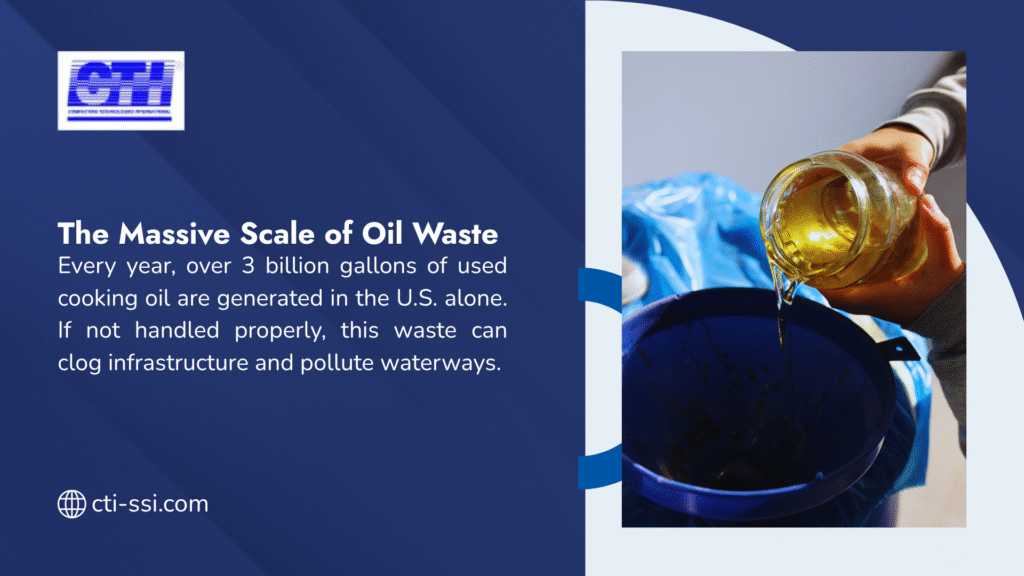
Disposal Method | Best For | Pros | Cons |
Container Method | Any amount | Simple, accessible | Takes trash space |
Absorption Method | Small amounts (under 1 cup) | Quick, easy | Not practical for large amounts |
Recycling Programs | Large amounts | Environmentally friendly | Requires trip to drop-off location |
Commercial Services | Restaurants, frequent fryers | Professional, convenient | Costs money for pickup |
What Not to Do When Disposing of Cooking Oil
Some disposal methods cause serious problems. Avoid these mistakes when figuring out how to dispose of cooking oil.
Never dispose of cooking oil down your kitchen sink, bathroom sink, or toilet, it will harden in the pipes and create a clog which can be difficult and expensive to repair even if you try to run hot water to wash it away.
Also, don’t dump cooking oil in your yard, it will kill grass and plants and seep into the ground, contaminating the soil, reaching the groundwater, and attracting pests such as rats and insects contributing to additional problems.
Avoid adding other liquids to cooking oil, while some people claim adding water will help dilute it, oil and water do not mix, and you would only be creating a bigger mess that will take longer to clean.
Be careful not to use cooking oil too many times. While it can be used more than once, cooking oil will become gummy over time, smoke at lower temperatures, catch on fire more easily, and lose flavor making your food taste bad.
Just like with old gasoline or antifreeze, your cooking oil must be handled and disposed of properly to keep your home, community, and environment safe.
Commercial Cooking Oil Disposal
Restaurants and businesses produce much larger quantities of used cooking oil, and the disposal methods differ from what you would do at home.
Commercial kitchens typically use grease traps that capture the oil before it enters the plumbing system, and these traps need regular cleaning and maintenance to work properly.
Most restaurants hire professional collection services, which provide storage containers and schedule regular pickups, and the collected oil is often recycled into biodiesel or other useful products.
If you run a food business, it’s important to check local regulations, as many areas require commercial kitchens to have approved disposal systems, and fines for violations can be substantial.
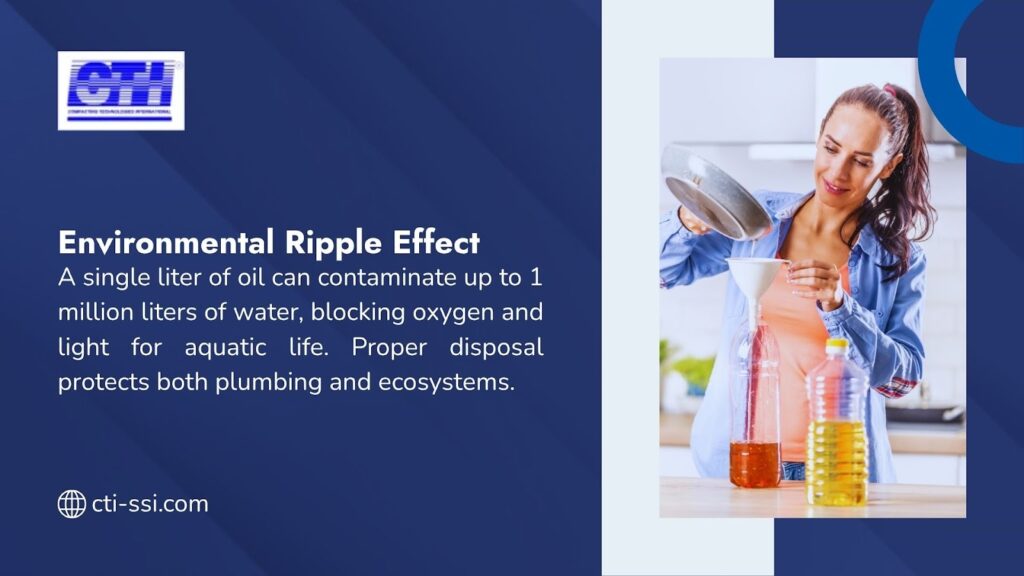
Reusing Cooking Oil Safely
Before you dispose of cooking oil, consider if you can reuse it. This reduces waste and saves money.
Strain the oil through cheesecloth or coffee filters to remove food particles. Store it in a sealed container in a cool, dark place. Label it with the date so you know how old it is.
You can typically reuse oil 2-3 times if you used it for similar foods. Frying fish leaves strong flavors, so that oil should only fry fish again. Oil used for french fries can fry vegetables or chicken.
Watch for signs that oil has gone bad. If it smells rancid, looks dark and thick, or smokes at normal cooking temperatures, it’s time to dispose of it.
Oil Reuse Guidelines | Details |
Maximum Reuses | 2-3 times for home cooking |
Storage Method | Sealed container, cool and dark location |
Signs of Spoilage | Rancid smell, dark color, excessive smoking |
Strain After Each Use | Remove food particles to extend life |
Label with Date | Track age to prevent using old oil |
Alternative Uses for Used Cooking Oil
Sometimes the best answer for how to dispose of cooking oil is to give it a new purpose.
Small amounts of oil can fuel oil lamps. Mix it with soap to create homemade cleaners. Some gardeners use tiny amounts mixed with water to spray on plants to deter pests (though this should be done carefully and sparingly).
Used vegetable oil can also be composted if your compost system handles oils. However, this requires a hot composting system that reaches high temperatures. Don’t add oil to regular backyard compost bins.
Just like you might research how to dispose of paint or how to dispose of light bulbs for creative reuse options, cooking oil has multiple second-life possibilities.
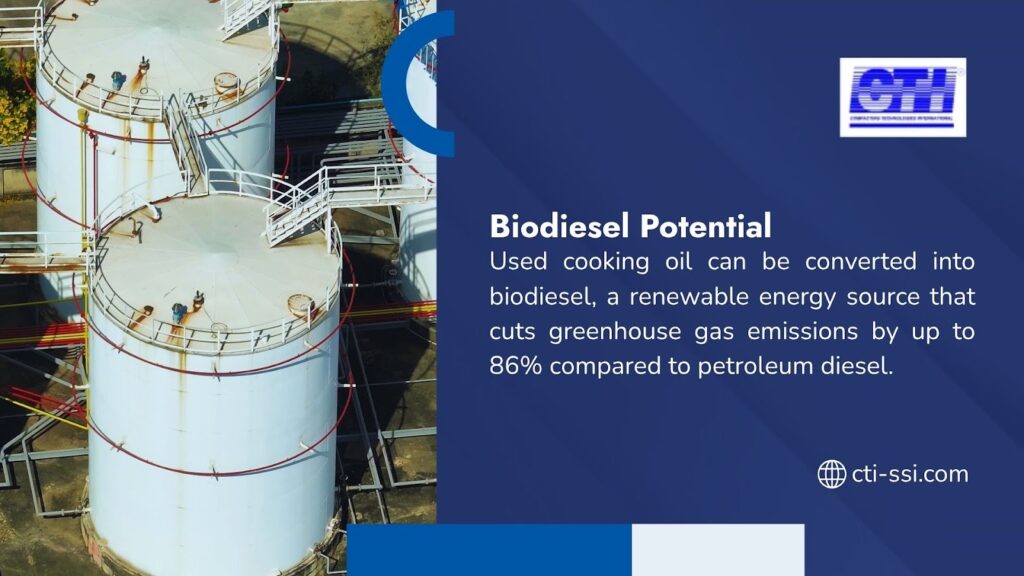
Get Professional Help with Waste Disposal
The safe disposal of household waste helps to keep your home, community, and the larger environment safe. However, figuring out how to deal with these various materials might be quite confusing.
CFI Safety Storage provides safe waste management services for your home or workplace, with the experience to properly discard cooking oil, household chemicals, and other materials that require special handling.
Whether you require regular pick-up service for a restaurant or need proper guidance involving the disposal of waste that has accumulated in your home, CFI Safety Storage has the knowledge to provide reliable options that also consider environmental responsibility.Contact CFI Safety Storage today to learn how we can support you with our waste disposal services. We will keep waste disposal easy, safe, and compliant with all local regulations.


